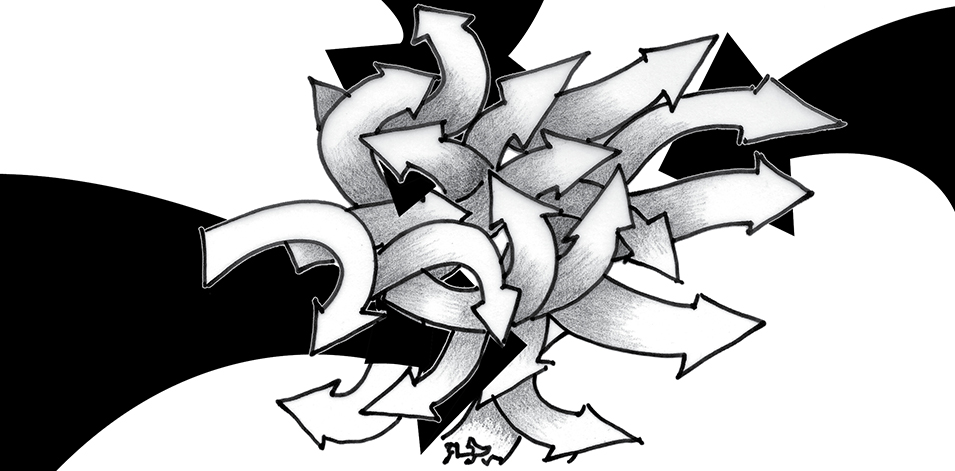Local protagonists are experts; they know the potential of their surroundings. Our concept is based on engaging the existing community. Initiated by artists, ExRotaprint is not intended as a location for artists alone. From the very outset we viewed it as an opportunity to create a common space for people with different occupations, different backgrounds, and histories. Today, ExRotaprint rents a third of its overall space to each area of work, art, and community. Working on site are businesses, community outreach organizations, and independent creatives. An overall community image emerges that presents an alternative to the imposed dreams of investment return monocultures, and instead promotes cooperation and exchange. We are constantly confronted by the challenge of finding the right balance between interests. Optimal solutions must be conceived and discussed for both spatial and social concerns in order to maintain an overall balance and to ensure its effectiveness and adequacy. Communication and direct contact are essential. The reality here is organized socially, economically, and culturally using strategies from art. ExRotaprint, as a social sculpture, implies an expansion of the domain of art, here in the form of actual reality—not as a reproduction or quotation. Though it can be art, it does not have to be. ExRotaprint fights against the delimiting tendencies of culture and money.
The Social Sculpture
We specifically select projects that work with the neighboring community of ExRotaprint. A language school run by Kurds teaches German to immigrants. A job agency works with the unemployed and creates projects in the narrow, nebulous zone between the real economy and employment politics. At the learning center, school dropouts experience a regular daily schedule and have the opportunity earn a high school diploma. The community outreach organizations guarantee that the complex is open to people who live in Wedding and are part of the social body that makes up the district. Dependent on public monies and political developments, the existence of these projects is continually in question.
Musicians, designers, writers, and artists rent office spaces, practice rooms, and studios. We offer these spaces to young creatives who, in turn, operate as points of interconnection themselves. They are extremely well networked and create their own professional structures.
The ground floor spaces are reserved for manufacturing businesses: metal construction; workshops for neoprene and wood; art framing and exhibition design; and serigraphy. Electricians, janitorial services, and building contractors occupy the large units. In a district where manufacturing jobs have disappeared, new jobs and educational training sites are central to the economic and social stabilization of the local environment.
The spatial coexistence of manufacturing, creativity, and job services provides a mix that creates mutual exchange, critique, and spawns future growth. Different ways of working and contrasting schedules encourage a questioning of reality. A design that someone finds interesting doesn’t suit another’s tastes. Seating, ashtrays, signs, fonts, and the design of the Kantine are things people encounter on a daily basis, and which are viewed differently. Special forums are held for topics affecting particular groups related to onsite issues or upcoming renovation work. Direct contact is always possible, ExRotaprint has flat hierarchies and it moderates interests, visions, and ideas. This creates ties and fosters mutual communication.
The Driving Force
The spectacular architecture of the Rotaprint site was the inspiration and driving force behind ExRotaprint. In the 1950s, the Rotaprint company commissioned architect Klaus Kirsten to build modern, new additions onto the original Wilhelminian structure. The buildings and their spatial configuration are ideally suited for uses of work, art, and community. As a result of the project, a cultural spotlight has been cast onto ExRotaprint’s architecture and the architectural office of Klaus Kirsten & Heinz Nather. Our interest in the architecture is not an end in itself, but is part of a project that promotes and sustains heterogeneous relationships that are at times far removed from high culture.
Dilemma
Berlin’s Wedding district is a real space of urban theoretical discourses. Immigration, unemployment and poverty, and a fledgling increase in property values spurred on by creatives and their codes are converging to produce a conflict in the years ahead that will be reflected in many cities and redevelopment processes. Wedding, along with Neukölln, is one of the last remaining “precarious districts” close to the center of Berlin with low rents and available spaces.
The real estate industry makes the most money from low-rent districts when these increase in value. Prices are low for living space in Wedding, and the potential for growth after restoration and renovation work is high. Real estate industry representatives have long recognized the potential affiliated with artists, who, in unison with those on the left and people leading alternative lifestyles, seek out new spaces for working and living, and, channeled into so-called problem zones, act as a kind of “area fertilizer.” Those involved, regardless of affiliation, pave the way with cheap living and workspaces for the next stage of the gentrification caravan. They are then part of the first ones to be pushed further out to make the next city district attractive. ExRotaprint is viewed by the real estate industry in these terms and cited as a positive locational factor in marketing the area. This reality cannot be avoided.
Our experience—that the success of ExRotaprint was only possible in a precarious economic environment—has fostered a bond with the local surroundings. We view what’s here, and its potential, in a positive light and we strengthen existing structures through our utilization plan. We ask ourselves how the processes of displacement can be suppressed, and how to develop something new and positive out of the existing surroundings.





